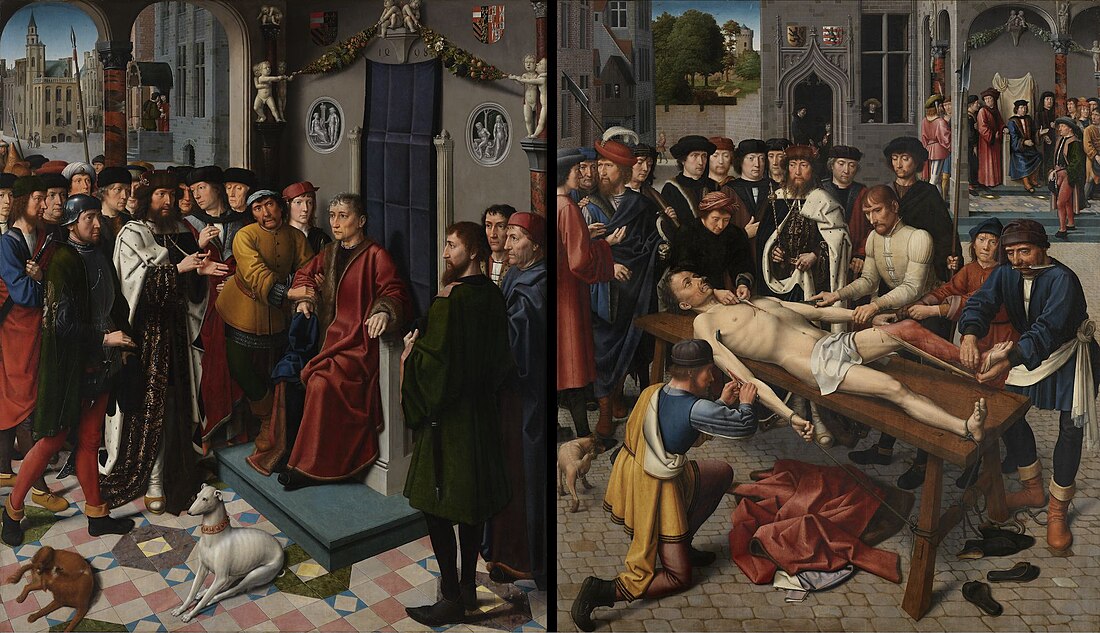The Judgement of Cambyses is an oil-on-wood diptych by Dutch artist Gerard David, depicting the arrest and flaying of the corrupt Persian judge Sisamnes on the order of Cambyses, based on Herodotus' Histories.[3] The diptych was commissioned in 1487/1488 by the municipal authorities of Bruges which requested a series of panels for the deputy burgomaster's room in the town hall.[4]
| The Judgement of Cambyses | |
|---|---|
 | |
| Artist | Gerard David |
| Year | 1488 |
| Type | Oil on wood[1] |
| Dimensions | 202 cm × 349.5 cm (80 in × 137.6 in) |
| Location | Groeninge Museum, Bruges, Belgium[2] |
The diptych was painted on oak panels and was first mentioned in the Bruges' archives as The Last Judgement.[4] It was used by the town burghers to encourage honesty among the magistrates and as a symbolic public apology for the imprisonment of Maximilian I in Bruges in 1488.[5] The top right corner of the flaying scene features Sisamnes' son dispensing justice from his father's chair, now draped with the flayed skin.
It is one of the few works by David that is not based on traditional religious themes.[6]
There are also other paintings with the same subject, such as that by Dirck Vellert from 1542.
Usage in protests
David's The Judgement of Cambyses was used in August 2012 by the supporters of Yulia Timoshenko when they showed the reproduction of the work to the judge who was reviewing her case.[7] In November of the same year two activists showed the reproduction of The Judgement of Cambyses to the judge Andrey Fedin, who convicted Maxim Luzyanin, involved in the Bolotnaya Square case.[8]
References
External links
Wikiwand in your browser!
Seamless Wikipedia browsing. On steroids.
Every time you click a link to Wikipedia, Wiktionary or Wikiquote in your browser's search results, it will show the modern Wikiwand interface.
Wikiwand extension is a five stars, simple, with minimum permission required to keep your browsing private, safe and transparent.
